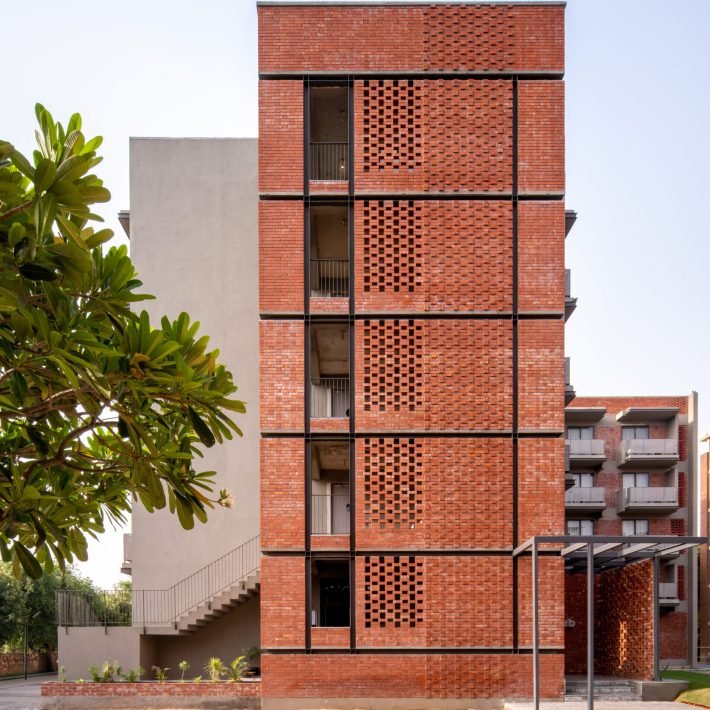Brijesh Bansal, Founder of Stone Art, writes about the fusion of sustainable stone art with landscape design and architecture. He explains his visionary approach, bridging nature’s beauty with eco-conscious creativity.
Someone once said, “Nature is the master artist; we merely uncover its beauty through our creations”, and there is no statement that stands truer to my belief. Landscape design and architectural innovation is one of the most dynamic fields, currently going through a resounding shift towards sustainability and reshaping the very essence of outdoor aesthetics. Within this evolution, the incorporation of sustainable stone art stands as a beacon of elegance, seamlessly blending nature’s raw magnificence with human ingenuity.

Natural stones have been utilized since humanity’s earliest history, dating back to the Stone Age. While ancient architecture heavily relied on monoliths, the enduring appeal and sustainability of natural stone have been recognized since then. Fast forward to the present day, numerous renowned structures worldwide incorporate salvaged stones from centuries-old buildings, underscoring their timeless allure and eco-friendliness. The global rise in eco-consciousness has sparked a growing interest in crafting homes that are not only visually stunning but also sustainable and energy-efficient. As a result, green homes are swiftly becoming the standard of modern living.
Sustainable art including stone carving, brass lights, and marble carving often crafted from ethically sourced materials and employing eco-conscious techniques, not only enriches the visual allure of spaces but also embodies a profound reverence for the environment. This paradigm shift towards sustainable practices is not merely a trend but a testament to our collective responsibility towards the planet we call home.
As landscape architects and designers embark on a journey to harmonize the built environment with the natural world, the utilization of sustainable stone art emerges as a formidable ally. From intricate sculptures adorning serene gardens to rugged stone pathways meandering through urban oases, the possibilities are as boundless as the creativity of those who wield the chisel and hammer. One of the most stunning examples of stone architecture is The Colosseum in Rome, Italy, built in 80 AD. The majority of this monument was built with travertine stone slabs, a very common building material in Italy. As are The Great Pyramid located in Giza, Egypt. Built from over 2.3 million blocks, the pyramid is made with a few different types of stones.
Beyond its aesthetic appeal, the incorporation of sustainable stone art carries multifaceted benefits. Stone, a timeless medium revered for its durability and resilience, embodies longevity in its essence. When sourced sustainably, it becomes a symbol of ethical stewardship, contributing to the preservation of natural landscapes and communities where it originates. Moreover, sustainable stone art serves as a testament to the fusion of tradition and innovation. Drawing inspiration from ancient craftsmanship while embracing modern techniques, artisans breathe life into inert rock, transforming it into an expression of cultural heritage and contemporary design.

Additionally, natural stone’s versatility is evident in its ability to be fully recyclable and reusable for various purposes throughout its lifespan. Salvaging and recycling stone represents one of the most sustainable approaches to maximizing its potential. For example, stone retrieved from an old building can be repurposed for paving, facades, or retaining walls. Additionally, smaller flat stones offer creative opportunities, such as integrating them into mosaic floor or wall designs with strategic placement.
In the realm of architecture, sustainable stone art transcends mere ornamentation, assuming the role of structural integrity and tactile allure. From facades that narrate tales of bygone eras to interiors that evoke a sense of tranquillity and warmth, a stone becomes more than just a building material; it becomes a conduit for storytelling and sensory experience. Furthermore, the integration of sustainable stone art fosters a deeper connection between individuals and their surroundings. As tactile surfaces invite exploration and contemplation, and sculptural forms evoke awe and wonder, spaces become catalysts for introspection and communion with nature, a respite from the frenetic pace of modern life.

The use of sustainable stone art in landscape design and architecture transcends mere aesthetics, heralding a paradigm shift towards ethical stewardship and holistic design principles. As Blocks metamorphose into Blooms, and stone yields to the touch of human hands, a harmonious synthesis between the built environment and the natural world emerges, one where sustainability, creativity, and reverence for nature converge in timeless elegance.















